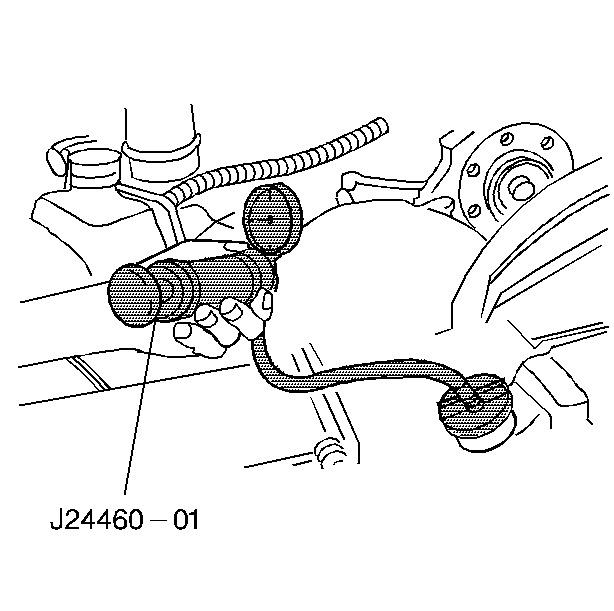Leak Testing
- Add water to the radiator to detect core leaks. Clean the core
in order to make it easier to find the damaged area.
- Remove dirt and insects from the fins with a common water hose
without a nozzle. Excessive water pressure could damage the fins.
- Scrub the core with a soft-bristle brush. Use clean hot water
or hot water with a mild detergent solution.
On-Vehicle Testing
Tools Required
J 24460-01 Cooling
System Tester
- Pressure test the aluminum/plastic radiator using a common pump
and gauge.
- Make sure the cooling system is at a cool temperature, then remove
the radiator cap.

- Connect the gauge and
apply normal system operating pressure. Do not exceed 138 kPa (20 psi).
- Watch the gauge needle for an indication of a leak.
- Examine the radiator and other cooling system parts for signs
of escaping coolant.
- Repair all hose and hose connections as required.
- Check the radiator cap to ensure that it will maintain the correct
pressure.
- If the radiator is leaking during the pressure test, mark the
leak area in order to find the leak once the radiator is removed.
Off-Vehicle Testing
Notice: Never use compressed air to pressure test a radiator that is not regulated
to 138 kPa (20 psi). Pressures over 138 kPa (20 psi.)
will damage the radiator.
Do not use the boil-out tanks or vats or other tanks that
have been used for copper and brass radiators. The flux, acid and caustic
cleaners remaining in these tanks will attack the aluminum and cause radiator
failure. A separate test tank containing clean water is strongly recommended
for servicing an aluminum/plastic radiator.

- Install the test fittings or rubber test caps in the inlet and
outlet necks and seal the oil cooler footings with metal plugs. This will
protect the cooler and keep the fluid from running out.
- Attach the pressure tester and gradually apply air pressure.
| • | Do not exceed 138 kPa (20 psi). |
| • | Check pressure gauge to see if there is a pressure loss. |
| • | To ensure that there are no small leaks, run water over the repair
area and look for bubbles. (A mild detergent is very helpful.) |
| • | If a large water tank is available, submerge the radiator and
check for bubbles at the following locations: |
| - | Oil cooler connections (4) |


